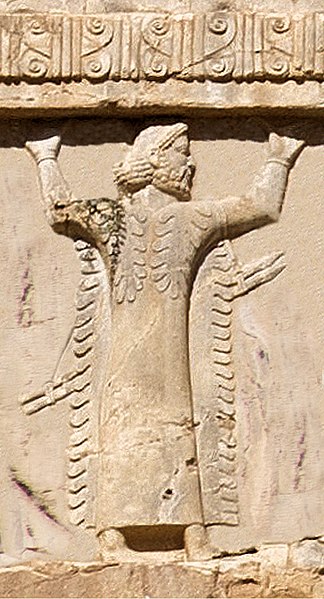Libya's history involves its rich mix of ethnic groups, including the indigenous Berbers/Amazigh people. Amazigh have been present throughout the entire history of the country. For most of its history, Libya has been subjected to varying degrees of foreign control, from Europe, Asia, and Africa.
Prehistoric Libyan rock paintings in Tadrart Acacus reveal a Sahara once lush in vegetation and wildlife.
The temple of Zeus in the ancient Greek city of Cyrene. Libya has a number of World Heritage Sites from the ancient Greek era.
Libyan soldier of the Achaemenid army, c. 480 BCE. Xerxes I tomb relief.
The Arch of Septimius Severus at Leptis Magna. The patronage of Roman emperor Septimus Severus allowed the city to become one of the most prominent in Roman Africa.
The Aghlabids were an Arab dynasty centered in Ifriqiya from 800 to 909 that conquered parts of Sicily, Southern Italy, and possibly Sardinia, nominally as vassals of the Abbasid Caliphate. The Aghlabids were from the Najdi tribe of Banu Tamim and adhered to the Mu'tazilite rationalist doctrine within Hanafi Sunni Islam, which they imposed as the state doctrine of Ifriqiya. They ruled until 909 when they were conquered by the new power of the Fatimids.
An Aghlabid cistern in Kairouan
The Great Mosque of Kairouan, rebuilt by Ziyadat Allah I in 836
Gold dinar of Ibrahim I ibn al-Aghlab (184–196 AH), anonymous (but dynastic motto 'Ghalab' on the reverse), no mint name (probably Kairouan, Ifriqiya). Struck in 192 AH (807/808 AD). Preserved at the Musée national d'art islamique de Raqqada [fr].







